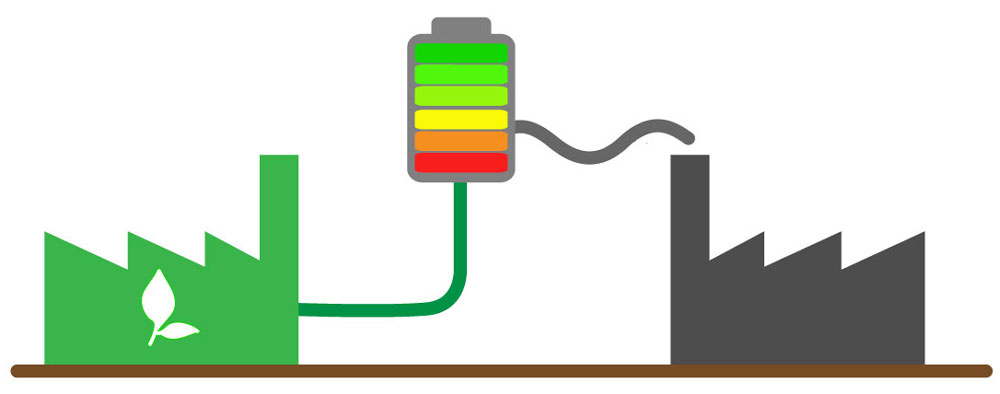“Energy storage can be the next big thing” was one of the enthusiastic slogans we heard from one of our industry partners in the HighEFF CEER, which is a research centre for environmentally-friendly energy utilisation in industry. Up until then we were uncertain as to whether this topic was something we researchers had any major interest in, or if it even had industry backing.
During the next eight years, as participants in the HighEFF centre, we will be researching into, and developing new methods and systems for, the interim storage of surplus heat in industrial contexts, as well as how this energy can be utilised after storage.
In order to achieve greenhouse emissions reduction targets, it is essential that we take better care of the energy we have produced, and recycle it as efficiently as possible.
Straight from the stacks
Up until now, electricity storage has been the hottest topic, involving battery storage, hydrogen, pump storage power plants, and many other technologies that everyone is more or less familiar with.
But why not apply the same principles to heat produced by factories?
The International Energy Agency (IEA) estimates that between 60 and 80 per cent of all industrial energy consumption goes mainly towards producing heat, and that most of this heat is released straight through factory chimney stacks after use.
What about thermal storage systems?
The challenge we face is that there is too often a mismatch between the demand for surplus heat and its availability in terms of timing, location and temperature. Fortunately, a lot of research is currently being carried out in this field, and we want to find out how the various thermal storage technologies can be used in industrial applications.
Our initial work has involved making an assessment of current technologies, finding out about their progress in terms of development, and what remains to be done before they can be applied in industrial contexts.
Many of these technologies have already been in use for some time. One example is the use of household hot water tanks, which most of us have at home, where we store heat until we need it. The same principle can also apply in industrial contexts, especially in situations where we want to use surplus heat generated by industry to supply district heating systems. It is becoming increasingly common to install large buffer tanks that can accommodate major fluctuations in demand. Water is recognised efficient storage medium, but it takes up a lot of space.
Matching technology with process
Current research focuses mainly on the development of more compact technologies such as physically smaller storage systems, often with increased capacities. Our work has revealed that many compact technologies exist that have come a long way in terms of their development, and which will soon be available for industrial application.
So, the challenge facing us now is to succeed in identifying the right processes and linking them with appropriate technologies. Many things have to be taken into account when selecting a technology. There is no absolute blueprint for matching a given technology to the different processes. Each process has its own optimal technology.
The aim of the HighEFF research centre is that in eight years time, we will be better equipped than we are today to take better care of the energy generated by manufacturing processes. But we will only achieve this if energy storage technologies are adopted by industry.









Comments
No comments yet. Be the first to comment!